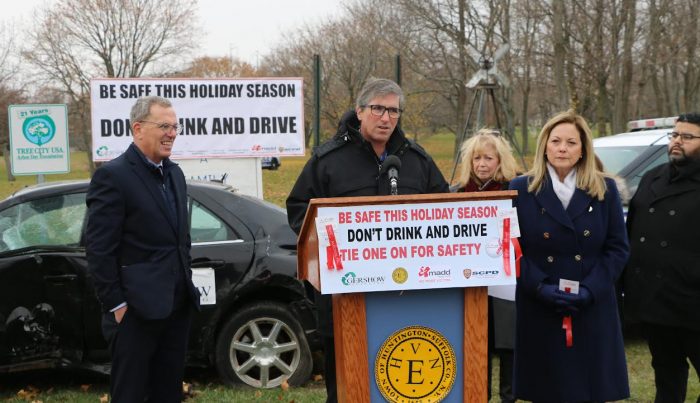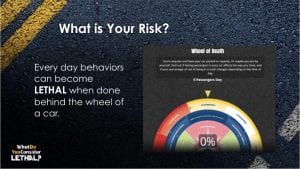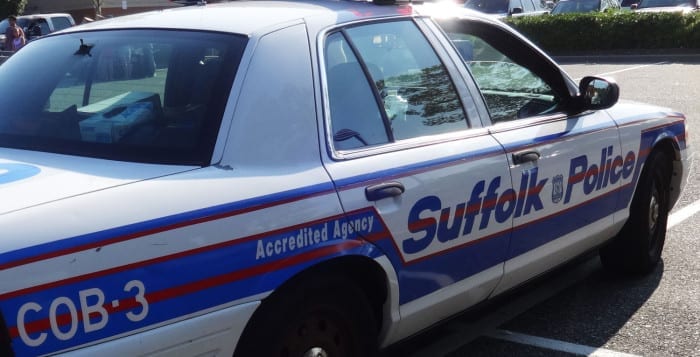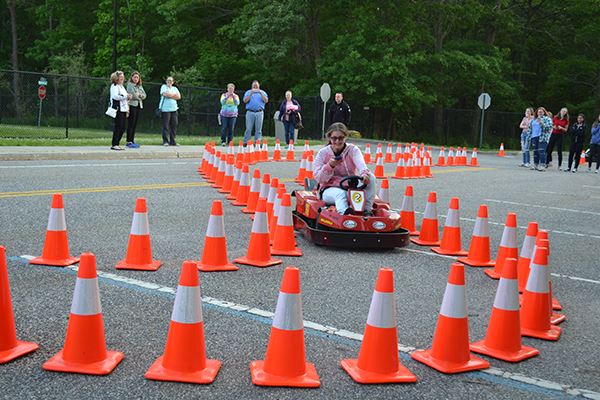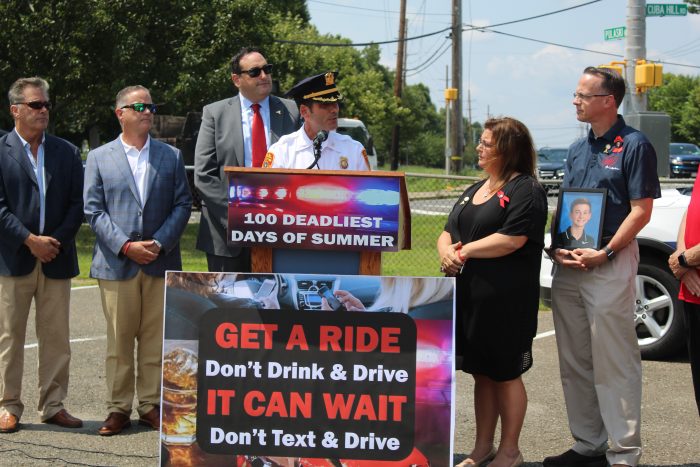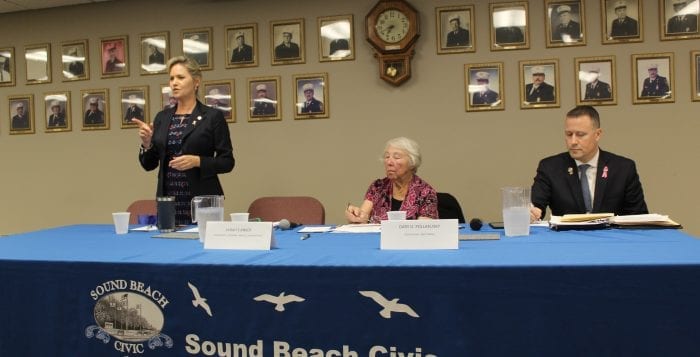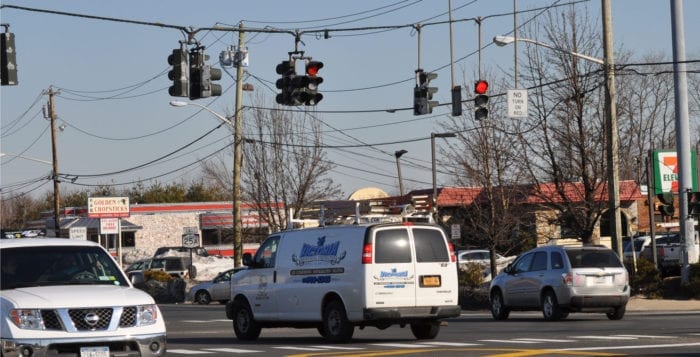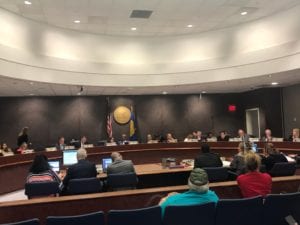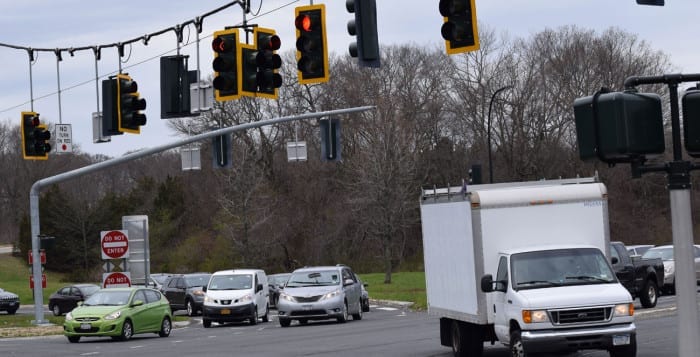County Legislator Sarah Anker (D-Mount Sinai) and Gary Pollakusky, the challenger, dueled at a meet the candidates night hosted by the Sound Beach Civic Association Oct. 14. Anker has served as the Suffolk County 6th District legislator for the past eight years and is seeking another two-year term. Pollakusky is looking to unseat the incumbent after an unsuccessful run for the same position in 2017.
Here are some of the topics the candidates discussed.
Suffolk’s fiscal situation
Pollakusky criticized how the county handles its finances. He said there have been seven bond downgrades since 2012 and the structural deficit is between $85 and $150 million.
“We have raised taxes and fees by $200 million in the last eight years; we are not doing the right thing by our residents,” he said.
Anker disagreed saying that the county has never had a junk bond status.
“We’ve never been there,” she said, adding the county has a AAA bond rating in long-term debt services.
“When I took office in 2011, there was a $500 million deficit, we changed that,” the legislator said. “We are anywhere near $50 to $60 million. We are cleaning up the house, we really are.”
The incumbent also said the county has since streamlined services, combined departments and reduced staff.
Heroin/opioid epidemic
Both candidates agreed that the opioid epidemic is still an ongoing problem on Long Island.
Pollakusky said there are three ways to address the epidemic. He would look into finding prevention programs for schools whether they be assembly or curriculum based.
The challenger touched on law enforcement.
“Our law enforcement is so important to the process of fighting this opioid epidemic. We have hundreds of drug dealing homes along the North Shore,” he said. “These are consistent offenders, we don’t have enough boots on the ground, law enforcement is thinned staffed and that’s because our county is fiscally irresponsible.”
Pollakusky criticized Anker for voting to close the Foley center, a nursing and rehabilitation facility, saying treatment programs are few and far between.
Anker defended her choice on the Foley center stating that it was losing $10 million a year, so the county executive thought it best to sell it.
She spoke about her work as the chair of the Suffolk County Heroin and Opiate Epidemic Advisory Panel including beginning to institute Narcan workshops in the fight against opioids.
“We are getting a lot done, we are cross communicating, networking, we are finding where the system is failing us,” she said.
The incumbent brought up education as a key component.
“We have to get to these kids when they are young, not to scare them, but to begin education in elementary and increase it into middle and high school,” she said.
Red-light camera program/road safety
Anker said the red-light cameras are meant to protect residents and get drivers to stop and prevent accidents.
She mentioned fatal accidents have decreased by 11 percent, but there was an increase in rear-end crashes that she considered unacceptable. She said she is frustrated with the program as it is not working as it should be.
“The report I had commissioned failed to look into distracted driving,” she said. “I need to know if it’s a red light or [someone] being distracted. I’ve heard from law enforcement that its mostly distracted driving.”
She also said there needs to be more educational driving programs for teens and adults.
Pollakusky said if elected he would terminate the red-light program.
“It has been a money grab for our county for some time, and they have just voted to extend this for another five years,” he said.
The challenger called out Anker for commissioning another report on the program that cost taxpayers $250,000.
He stated the report shows that accidents increased at intersections with red-light cameras and argued that yellow lights change quicker to red merely for profit.
Development/infrastructure/housing
Anker said she would focus on creating a type of smart growth development where housing is built in one area so work can be done on the surrounding infrastructure.
She likened it to the Ronkonkoma hub development. The incumbent also proposed creating an eco-tourism hub located on the north end of the William Floyd Parkway, which would support local businesses.
“Tourism dollars have brought in $4 billion to Long Island,” she said.
For housing, Anker would propose creating a millennial housing project similar to planned retirement communities that would be located near college campuses and transportation. She also mentioned the ongoing revitalization of downtown Rocky Point.
Pollakusky said he is less concerned with development, as they are seeing seniors and college graduates leave the area and more empty business fronts in the area.
“The problem is people are leaving because of taxes,” he said. “Expand the tax base, lower the residential tax burden by supporting businesses.”
The challenger said local businesses are important to the fabric of the community.
“We need to inspire commerce and economic development,” he said.

